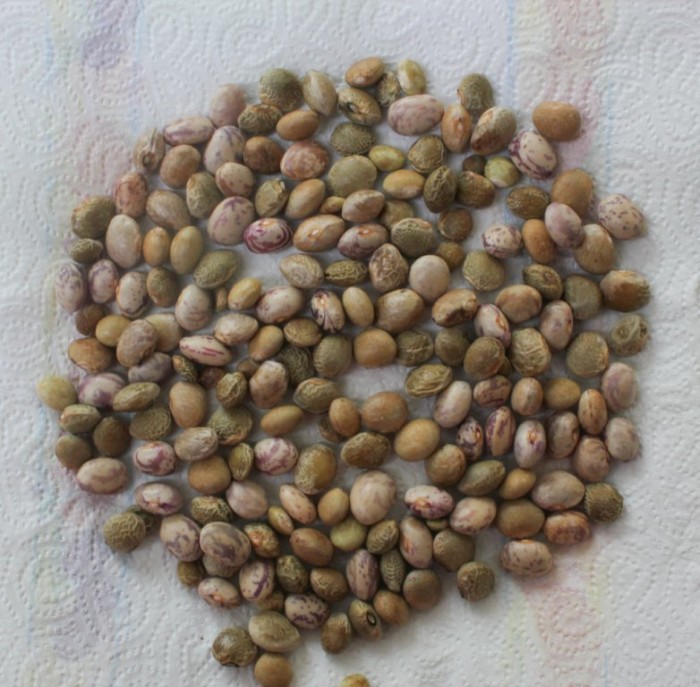I hope that the end of October was not set up to give us a foretaste of things to come this month! After soothing gardeners with unseasonably balmy weather, temperatures crashing down to zero and beyond in a single night, sent shocked gardeners scurrying for greenhouse heaters and metres of horticultural fleece! I suppose it shouldn’t come as a shock, given how unpredictable the weather has been this year!
 The climbing ‘borlotto’ type beans I harvested before the crash are now drying in the greenhouse. It’s fascinating that ‘Feijao de Trepar de Vagem Riscada’ a Portuguese heritage variety, bought from the market in Madeira, has out-performed any other bean that I planted. You would have thought that it would have preferred hot summers. It is always worth experimenting with unusual crops or cultivars; I often bring back plants or seeds from trips around the EU; even if crops fail, you have only lost a few euro’s but if they succeed, then you have something tasty and unusual for the table. Why don’t you try doing the same?
The climbing ‘borlotto’ type beans I harvested before the crash are now drying in the greenhouse. It’s fascinating that ‘Feijao de Trepar de Vagem Riscada’ a Portuguese heritage variety, bought from the market in Madeira, has out-performed any other bean that I planted. You would have thought that it would have preferred hot summers. It is always worth experimenting with unusual crops or cultivars; I often bring back plants or seeds from trips around the EU; even if crops fail, you have only lost a few euro’s but if they succeed, then you have something tasty and unusual for the table. Why don’t you try doing the same?
Now is the season of leaf raking! It is particularly important to keep the lawn free of leaves, or they’ll block out the light, so the grass becomes pale and yellow. Pick them up with a rotary mower on a dry day, still day, the chopping action of the blades plus the lawn clippings, increases the nutrient value and turns them into humus rich soil conditioner. On windy days, rake in the direction that the wind is blowing and gather them with leaf boards or a lawn vaccuum. Leaf boards, made of plywood or plastic, ensure that large volumes to be picked up efficiently. Small amounts can be put into a bin liner; moisten them to help them rot, then pierce holes in the bag with a garden fork, tie the top loosely, then stack for at least two years, checking them occasionally to ensure they are still moist. Alternatively, make a square or round frame from chicken wire, well supported at the corners or at intervals around the circle with stakes or bamboo canes.
Thick leaves like walnut and evergreens like holly, Aucuba and cherry laurel, are better shredded and added to the compost heap. Leaf mould usually takes about two years, to rot. Material less than two years old can be used as mulch, soil improver, autumn top-dressing for lawns or a winter covering for bare soil.
Pots staying outside should be wrapped with several layers of ‘bubble wrap’ or hessian and raised from the ground on bricks or pot feet, to stop water-logging and reduce the chances of cracking. They can also be over-wintered in a frost free glasshouse, a cool spare bedroom, at the base of a sheltered wall, under an evergreen hedge covered with leaves, or under evergreen trees. Move ‘Acer’s’ in pots, where they are protected from cold wind and frost. Make a tripod of canes over borderline hardiness shrubs, cover them horticultural fleece and bind the leaves of ‘Cordyline’ together, holding them in place with twine. Happy gardening and wrap up warm!
Matt


